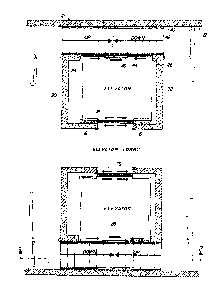Some of the information on this Web page has been provided by external sources. The Government of Canada is not responsible for the accuracy, reliability or currency of the information supplied by external sources. Users wishing to rely upon this information should consult directly with the source of the information. Content provided by external sources is not subject to official languages, privacy and accessibility requirements.
Any discrepancies in the text and image of the Claims and Abstract are due to differing posting times. Text of the Claims and Abstract are posted:
| (12) Patent: | (11) CA 1265069 |
|---|---|
| (21) Application Number: | 1265069 |
| (54) English Title: | ELEVATOR ESCAPE STRUCTURE |
| (54) French Title: | STRUCTURE D'EVACUATION D'UNE CABINE D'ASCENSEUR EN PANNE |
| Status: | Expired and beyond the Period of Reversal |
| (51) International Patent Classification (IPC): |
|
|---|---|
| (72) Inventors : |
|
| (73) Owners : |
|
| (71) Applicants : | |
| (74) Agent: | SMART & BIGGAR LP |
| (74) Associate agent: | |
| (45) Issued: | 1990-01-30 |
| (22) Filed Date: | 1987-02-23 |
| Availability of licence: | N/A |
| Dedicated to the Public: | N/A |
| (25) Language of filing: | English |
| Patent Cooperation Treaty (PCT): | No |
|---|
| (30) Application Priority Data: | None |
|---|
F4F/4.162
ELEVATOR ESCAPE STRUCTURE
Abstract of the Disclosure
This invention relates to an elevator shaft struc-
ture in a building about an elevator to aid escape from
the elevator upon a power failure; and it includes a
structure defining an elevator shaft for an elevator cab
which provides a rear shaft wall with a stairway extend-
ing outwardly from the rear wall for travel between the
floors and, in the elevator cab, a rear door is provided
for escape from the elevator onto the emergency stairway.
Note: Claims are shown in the official language in which they were submitted.
Note: Descriptions are shown in the official language in which they were submitted.

2024-08-01:As part of the Next Generation Patents (NGP) transition, the Canadian Patents Database (CPD) now contains a more detailed Event History, which replicates the Event Log of our new back-office solution.
Please note that "Inactive:" events refers to events no longer in use in our new back-office solution.
For a clearer understanding of the status of the application/patent presented on this page, the site Disclaimer , as well as the definitions for Patent , Event History , Maintenance Fee and Payment History should be consulted.
| Description | Date |
|---|---|
| Time Limit for Reversal Expired | 2005-01-31 |
| Letter Sent | 2004-01-30 |
| Inactive: Entity size changed | 2002-02-11 |
| Grant by Issuance | 1990-01-30 |
There is no abandonment history.
| Fee Type | Anniversary Year | Due Date | Paid Date |
|---|---|---|---|
| MF (category 1, 8th anniv.) - small | 1998-01-30 | 1998-01-27 | |
| MF (category 1, 9th anniv.) - small | 1999-02-01 | 1998-12-08 | |
| MF (category 1, 10th anniv.) - small | 2000-01-31 | 2000-01-11 | |
| MF (category 1, 11th anniv.) - small | 2001-01-30 | 2001-01-26 | |
| MF (category 1, 12th anniv.) - standard | 2002-01-30 | 2002-01-30 | |
| MF (category 1, 13th anniv.) - standard | 2003-01-30 | 2002-12-19 |
Note: Records showing the ownership history in alphabetical order.
| Current Owners on Record |
|---|
| SAMUEL GOMEZ |
| Past Owners on Record |
|---|
| None |